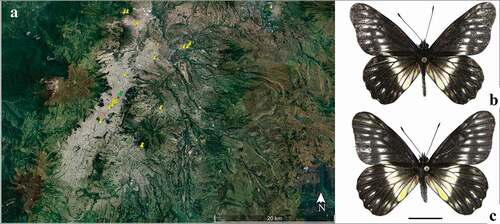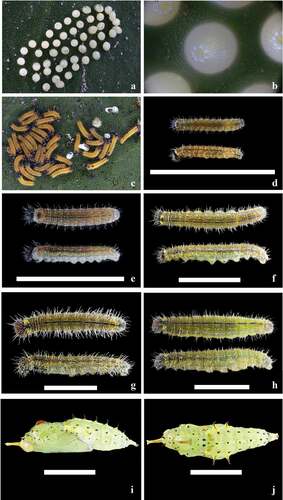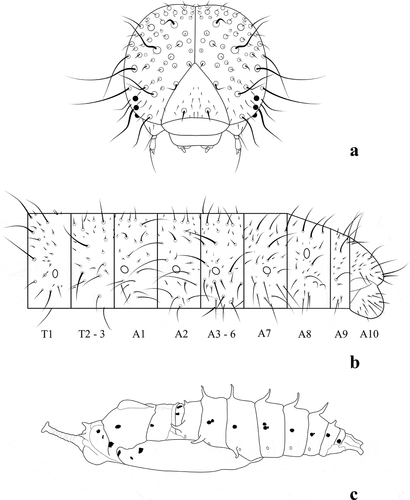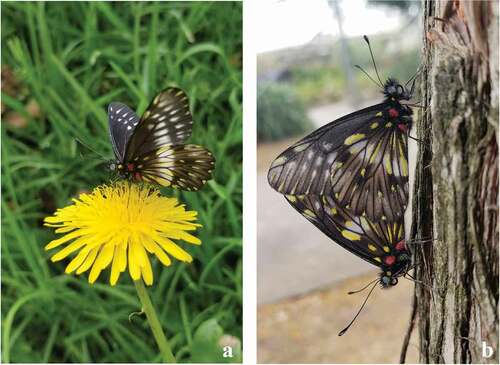Figures & data
Figure 1. (a) Map showing records of C. f. duna in Quito and surrounding areas, and the locality where immature stages were found (Parque la Carolina, green pin); (b) male dorsal view; (c) female dorsal view

Figure 2. Immature stages. (a) Cluster of eggs on a leaf; (b) Eggs, dorsal view; (c) Group of newly emerged larvae; (d) First instar dorsal and lateral view; (e) Second instar dorsal and lateral view; (f). Third instar dorsal and lateral view; (g). Fourth instar dorsal and lateral view; (h) Fifth instar dorsal and lateral view; (i). Pupa lateral view; (j) Pupa dorsal view

Figure 3. Catasticta flisa duna, immature stage morphology. (a) Head chaetotaxy of fifth instar, in anterior view; (b) Setal maps of fifth instar; (c) Pupa in lateral view

Figure 4. Host plant of Catasticta flisa duna, the mistletoe Phoradendron nervosum, parasitizing Prunus serotina in Quito, (a) Parque la Carolina; (b) Clumps of mistletoe on Avenida los Shyris; (c) Pupa on the bark of the host tree in the median area of the busy Avenida de los Shyris



